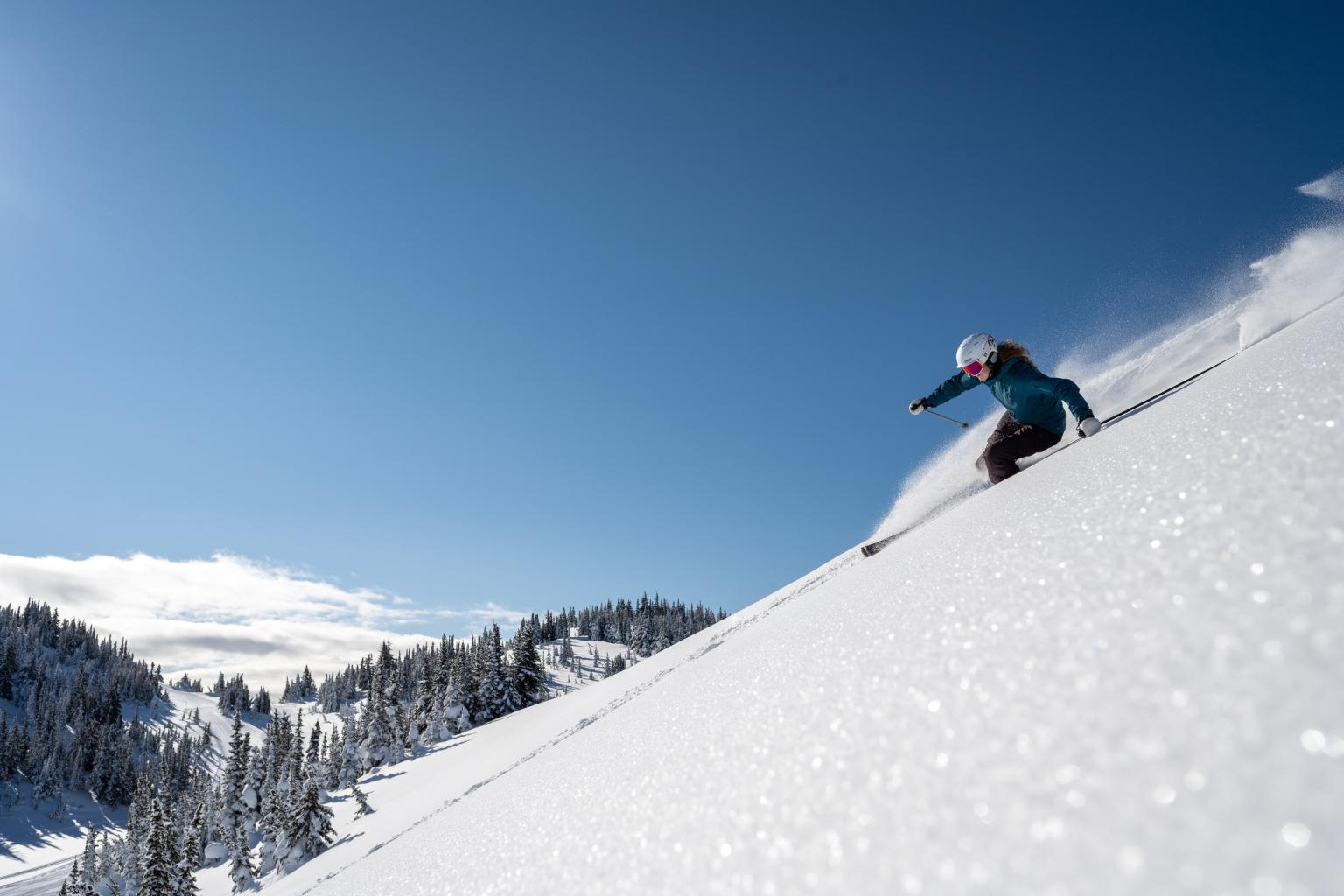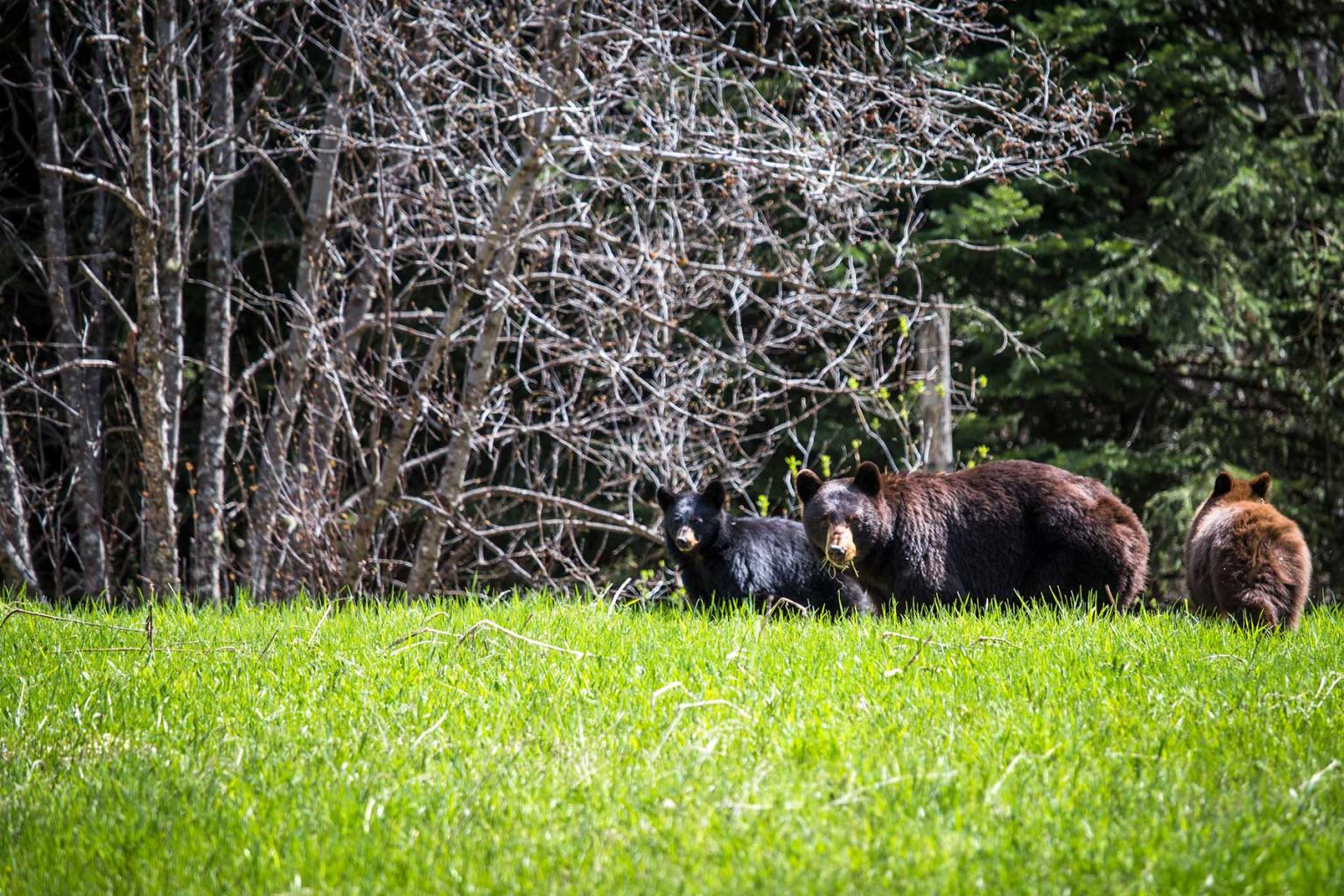
Top of the World
Elevation: 2,080m


The mountains of the area abound with animals free roaming in their natural habitat. While in resort or on the mountain you may encounter a black bear during your stay. If you do see a bear always keep your distance, many wildlife professionals recommend remaining a minimum of 100 metres away.
Pack out what you pack in: Do not throw any food or waste products out. Garbage and recycling receptacles are conveniently located at the top and bottom of the Sunburst chairlift and throughout the village.
Make noise: Call, sing, clap or talk loudly especially near streams and in areas of low visibility.
Be alert: Watch for bears or their scat and tracks, any strange smells or disturbed vegetation. Be aware of wind direction and speed. Extra caution is warranted when the wind is facing you.
Stay together: Hike and bike in groups and don’t let children wander. Larger groups (4 or more) are less likely to have a negative bear encounter.
Watch your pets: Keep your dog on a leash at all times. Dogs can provoke defensive bear behaviour.
Use officially marked trails: Travel during daylight hours. Bears are most active at dawn and dusk.
Remain calm. Think ahead. Your actions are the best defense against a bear attack.
Do not run: Bears can easily outrun humans. By running you may trigger an attack. Pick up small children and when possible stay in a group. Back away slowly and speak softly.
Give the bear space: Back away slowly and talk in a soft voice. Do not approach the bear or make eye contact.
Leave the area or make a wide detour: If you cannot leave, wait until the bear moves out of the way and ensure that the bear has an escape route.
If the bear rears up on its hind legs: It is curious and trying to see you or catch your scent better. It is not a sign of aggression. Back away slowly and talk softly.
Watch for aggressive behaviours: A bear may display aggression by swinging its head from side to side; making vocalizations such as huffs, snorts, whoops, or moans; displaying teeth or claws; jaw popping; swatting at the ground; staring with eye contact; panting; or laying its ears back. These behaviours usually indicate that the bear is stressed, acting defensively, and asking for more space. Attacks rarely follow, but this is a warning to leave the area.
For more information visit Wild Safe BC.
Please report all bear sightings to Sun Peaks Mountain Patrol at 250.578.5521.
You can help by reporting black bear sightings in and around Sun Peaks. Your reports help track bear activity and guide efforts to protect both bears and people.